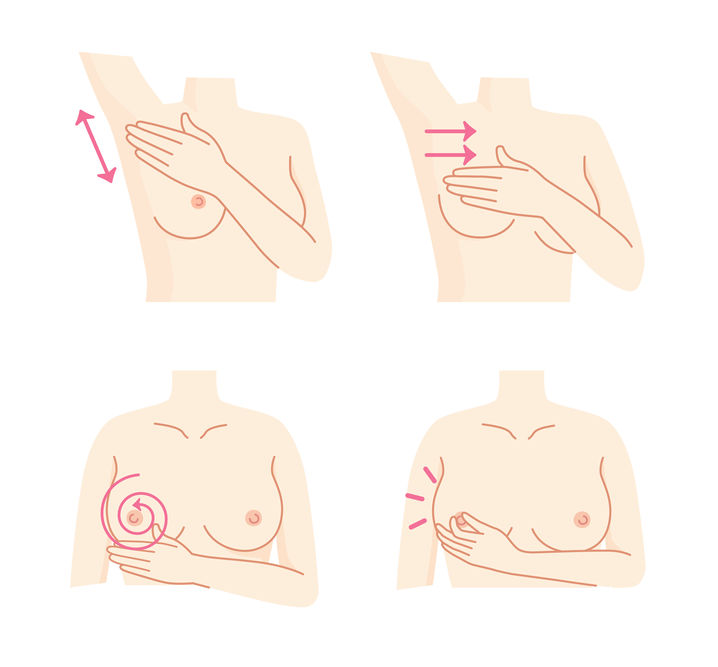As a woman, taking regular steps to monitor your reproductive health is key to maintaining your overall health and wellness. You must educate yourself and stay current on the most recent recommendations from women’s healthcare experts.
If you’re not already, you should be scheduling a yearly visit to the gynecologist to check in on your reproductive well-being. In addition to your annual appointment, you can take measures between visits to monitor your health—including a self-breast exam.
In honor of October being breast cancer awareness month, here is the essential information you need to complete a thorough and effective breast examination!
Why Are Self-Breast Exams Important?
Before we guide you through the process of a self-breast examination, you should understand why it’s so important to perform them regularly. Routinely checking your breasts helps detect any lumps, abnormalities, or other potential issues early before they become a bigger problem.
Ideally, self-exams should be completed once a month around the same time in your cycle (for the most accurate comparison). This will help you get familiar with the normal look and feel of your breasts, so you’ll notice if something changes and can address it sooner rather than later.
*Please remember that self-exams do NOT replace regular mammograms or women’s well visits, but rather are a supplemental preventative health measure*
3 Steps to a Self-Breast Examination:

1) Check Your Breasts in a Mirror
Undress from the waist up and stand in front of a mirror with your shoulders straight and arms at your side. Study your reflection to see if your breasts are their usual color, size, and shape. Then, raise your arms overhead and check your armpit area. Continue to look and feel for changes in contour or nipple position, swelling, skin dimpling or puckering, redness, soreness, or rash.
2) Feel for Lumps While Lying Down
Lying flat spreads your breast tissue more evenly, making lumps and bumps easier to detect. Check one breast at a time, bringing the arm on the side you’re checking above your head to rest. Use the fingertips of your opposite hand to feel the entire breast and armpit area in an up-and-down or circular motion.
As you’re feeling your breast, vary between light, moderate, and firm pressure to be sure you’re inspecting every layer of tissue (from the surface through deep tissue). Squeeze your nipple to check for discharge as well. Repeat the same process for your other breast.
3) Examine Your Breasts Standing or Sitting Up Straight
To ensure you’re examining your breasts thoroughly, it’s important that you check them in several different positions. After your mirror check and flat exam, repeat the process from the step above while standing or sitting upright. Most women find it easier to do this with wet or slippery skin, so a good spot to try it is in the shower.
When Should I Call a Doctor?
If you find a lump or other significant change during a self-exam, it’s best that you call your doctor to discuss it and set up an appointment. There’s no need to panic—most breast lumps turn out benign—but it’s always better to be safe than sorry. Prevention and early detection are key for any healthcare.
At South Avenue Women’s Services, we believe every woman deserves discreet and quality care for all her reproductive health needs. That’s why we employ a team of skilled and compassionate medical experts to provide the women’s wellness services you require, like mammograms to detect the presence of cancerous cells in the breast.
Call us at (585)271-3850 to reach a clinician any time during business hours or for an emergency through our answering service. We are here for your well-woman care needs!

